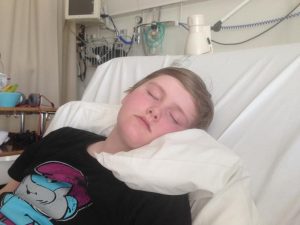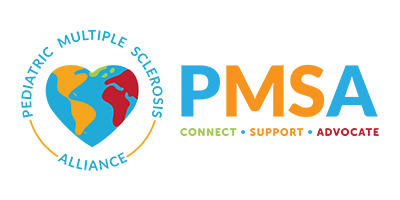About Pediatric Multiple Sclerosis
Pediatric Multiple Sclerosis Varies from Person to Person

Feeling good today…
Childhood MS may represent up to 10% of all MS cases. In the US, it is estimated that up to 10,000 children have multiple sclerosis. Although the clinical profile of MS appears similar to that seen in adults, several features may differ and specific issues arise in children. Younger patients with MS are more likely than adults to have seizures, brainstem, and cerebellar symptoms. Children with MS may have fewer T2 hyperintense areas on MRI scans, therefore not meeting MRI criteria established for adults.
Pediatric MS is similar to adult MS in the kinds of symptoms that occur. MS varies from person to person so there is no ‘standard’ set of symptoms for MS. However we know that common symptom of MS include numbness or tingling in various parts of the body, weakness of one or more parts of the body, walking difficulties, dizziness, fatigue, visual blurring, and occasionally double vision.
Patients may also have a symptom called Lhermitte’s phenomenon, in which they feel electrical tingling or shocks down their back, arms or legs when they bend their neck forwards. Sometimes people notice hesitancy when they try to urinate or may find that ‘when they have to go, they have to go’. There is no way to predict which symptoms one person might develop.
The usual course of MS is to have periods of time where things are relatively stable, followed by times when, over a few days or weeks, new symptoms occur or old symptoms worsen. This relatively rapid worsening is known as an exacerbation (also known as an attack, or a relapse). In others with MS, there may be a tendency to progress in that symptoms gradually worsen over time (months to years).
Reference: Children’s.com
About Pediatric Multiple Sclerosis from the National Multiple Sclerosis Society
Although MS occurs most commonly in adults, it is also diagnosed in children and adolescents. Estimates suggest that 8,000-10,000 children (up to 18 years old) in the United States have MS, and another 10,000-15,000 have experienced at least one symptom... Read More
The Challenge

Having an attack…
Diagnosing MS in children is more challenging than in adults due to the frequency of other childhood disorders with similar symptoms and characteristics. Pediatricians may not be familiar with MS because they are not expecting to see it in children. Children with MS benefit from comprehensive care through multidisciplinary teams that include pediatric and adult MS experts.
Motor Symptoms
Changes in Muscle Function
- Weakness
- Difficulty walking
- Tremor
- Bowel/Bladder problems
- Poor coordination
- Stiffness
Sensory Symptoms
Changes in Sensation
- Numbness
- Tingling
- Other abnormal sensations
- (“pins & needles,” pain)
- Visual disturbances
- Dizziness
Other Symptoms
- Heat sensitivity
- Fatigue
- Emotional changes
- Cognitive changes
